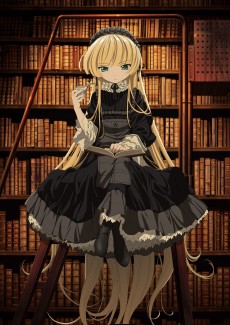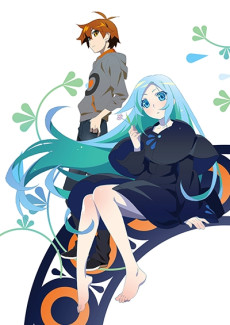SHOUSHIMIN SERIES 2ND SEASON
STATUS
COMPLETE
EPISODES
12
RELEASE
June 22, 2025
LENGTH
23 min
DESCRIPTION
The second season of Shoushimin Series.
The second season will focus on two new cases from the novel series, adapting the two-part third volume Shuuki Gentei Kuri Kinton Jiken (The Autumn-Exclusive Kuri Kinton Case) and the fifth volume Touki Gentei Bonbon Chocolat Jiken (The Winter-Exclusive Chocolate Bonbons Case).
(Source: MyAnimeList)
CAST
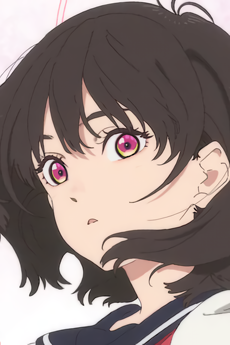
Yuki Osanai

Hina Youmiya

Jougorou Kobato
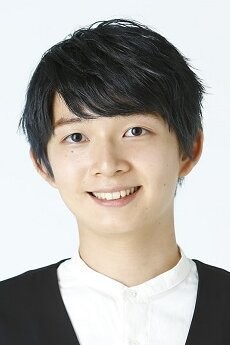
Shuichirou Umeda
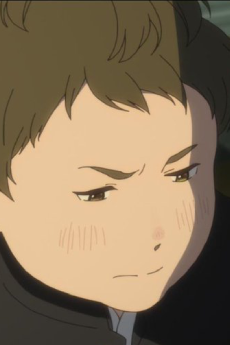
Joji Monchi
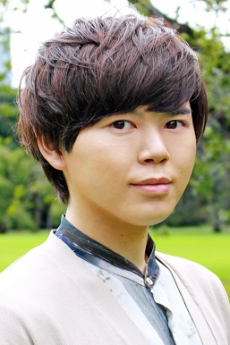
Yuuki Shin

Kengo Dojima
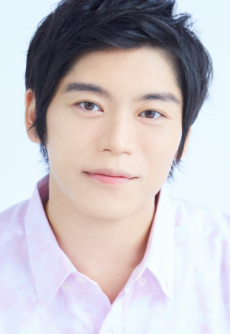
Makoto Furukawa
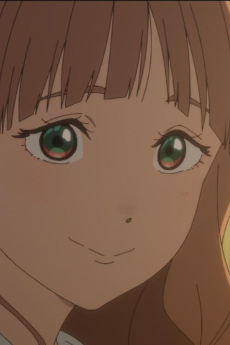
Tokiko Nakamaru

Yume Miyamoto

Takahiko Urino
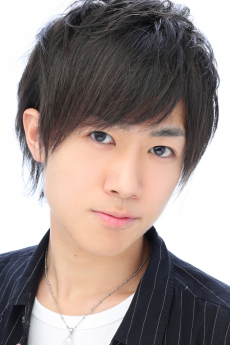
Teppei Uenishi
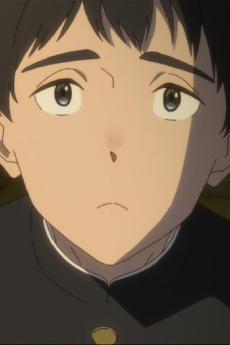
Kimiya Itsukaichi
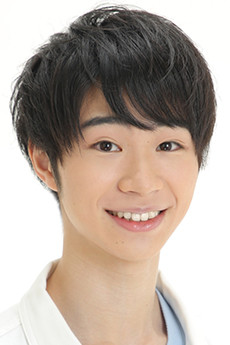
Kouki Oosuzu
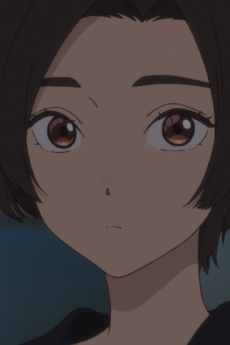
Yoshiguchi
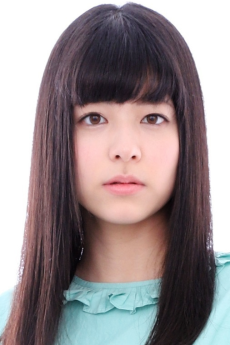
Miyuri Shimabukuro
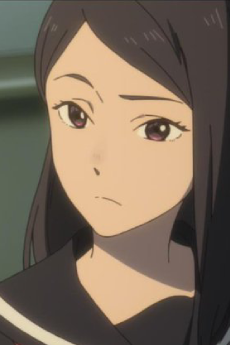
Makishima Midori

Asami Seto

Satomura
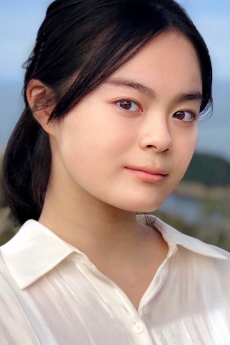
Anna Nagase

Katsuki
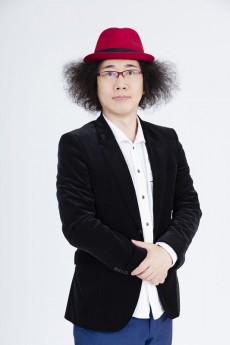
Kentarou Tone

Yuuto Hiya

Seiichirou Yamashita

Takayoshi Nitta

Genta Nakamura

Wakura
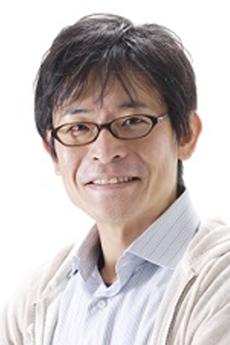
Riki Kagami
EPISODES
Dubbed
RELATED TO SHOUSHIMIN SERIES 2ND SEASON
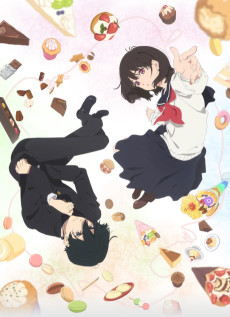 ANIME MysteryShoushimin Series
ANIME MysteryShoushimin SeriesREVIEWS

melamuna
85/100Captivatingly Intriguing: Truly one of the most underrated animes of 2025Continue on AniList

In Summer 2024, the first season of Shoshimin was released, landing its spot as one of the most underrated animes to come out of that season amidst other shows that were stronger in its popularity, such as the second season of Oshi no Ko and Alya. Nonetheless, the first season stood out for its slow and sober direction—giving a unique vibe from a lineup that's cluttered with bold and loud counterparts. Another factor is its grounded nature with how it handles its mystery, whether it's one-off mundane mysteries or multiple-episode mysteries, combined with its direction, ultimately giving this anime its own unique pedestal amidst the others—uniquely different that I often find myself guilty of saying that this show is a __“Hyouka clone"__, like what I've given in my review of the first season.
It was until the latter half of the first season that the story progressed—including its stakes. However, we've never really eaten half of the fruit with its progression since the first season ended abruptly. It was only 9 months later that we got to see that other side of the fruit. With that said, has it held up with the quality the first season had left it behind? More importantly, has the series progressed enough to distinguish itself from being just a __“Hyouka clone”__? ***

Season 2 of Shoshimin returns in full swing, diving into a mystery that unfolds across multiple episodes. However, the series remains true to its core—not by making the mystery itself the main focus, but by emphasizing how the characters react to it. Following the events of Season 1, we see the main characters, Jougorou Kobato (Shuichirou Umeda) and Yuki Osanai (Hina Youmiya), take separate paths, but at the same time, grow closer together as characters as the episodes go by. In the second arc of the series, these characters would feel closer than ever despite its arc that's mainly focused on past events. Season 2 continues to explore these diverging journeys while introducing new characters, such as Takahiko Urino (Teppei Uenishi), who has been in this facade forefront the series had put him in.
Aside from that, this season is mainly divided between its mystery aspects and its dramatic aspects, mainly with the ramifications of the end of season 1 and how it affected characters moving forward. Jougorou and Kengo (Makoto Furukawa) are mostly playing more in the sidelines, but they had been more firm as characters—especially with the stakes of the mystery—and the later decisions of Yuki, who is mostly playing the same as she did in Season 1, but knowing a brand new context from her, has played more of a heavy presence than she already did, especially when she's on screen. There's also Tokiko Nakamaru (Yume Miyamoto), who is a new character that's mostly playing as a minor character, but her presence lets us understand more about Jougorou’s current standing in season 2.
And Characters aside, Season 2’s first long mystery arc “The Autumn-Exclusive Kuri Kinton Case” is one of the most captivating mysteries the series had shown. Its nuanced nature of the mystery, multiple red-herrings, and coupled with the viewer following three paths of the same mystery, is a rather interesting and uniquely-captivating direction—a structure that vaguely reminds me of the film “Zodiac” by David Fincher. The second mystery arc “The Winter-Exclusive Chocolate Bonbons Case” however, is by far my favorite arc of the entire series. Its mystery is multilayered with a structure that's genius while playing with concurrent and past separate timelines whilst wovening into one. In my personal opinion, it makes the anime “Erased” more embarrassing than it should've been.
Its captivating characters and an intriguing plot wouldn't be as captivating as they should have been without its animation and direction. Though it's not as flashy or stretching its technical bounds, a clever use of cutting and stitching scenes—reminiscent of early studio shaft works—coupled with beautifully captivating cinematography and mixed with its calm yet heavy use of its whisper-like sound design combine to make one of the most underratedly enthralling animes to have come out recently. Season 1 already had these kinds of qualities as well, but season 2 took that foundation and polished its poking areas—producing a flawless production.
However, not every area in the series can be captivating for many. For instance, the subtlety of the given hits by its mystery and the hidden resolutions of certain characters of the series—a trait that came from the original creator Honobu Yonezawa and a trait that can be seen in Hyouka as well—can be a treat for mystery fans, as the gaps the series left are big enough that they can just interpret the scenarios but small enough that it doesn't ruin the built-up mystery and progression of the story. However, if you're not a mystery fanatic, these moments can easily pass over your head, and at moments you'll be annoyed that there are characters with seemingly rushed resolutions. Nonetheless, it's merely a subjective matter. ***
__Conclusion__

Despite the series title claims to be “ordinary”, it has definitely deviated away from it (for the better) as its groundedly captivating mysteries took over and fed our cravings for mystery stories. The second season of Shoshimin had lived up beyond the expectations, and has broken away from the bold of being a “Hyouka clone” to a series that firmly stands with itself with the mysteries it provides, the quirks of the characters, the mundanely captivating atmosphere, and the uniquely directed scenes that's purposefully subtle yet boldly captivating. Truly one of the most impressive, and underrated animes that have come out in Spring 2025. ***

ZNote
95/100Not a whodunit, but a howdoesit. Yonezawa and Kanbe find the way.Continue on AniList(Video includes audio. Be sure to unmute) Do you promise that your detectives shall well and truly detect the crimes presented to them using those wits which it may please you to bestow upon them and not placing reliance on nor making use of Divine Revelation, Feminine Intuition, Mumbo Jumbo, Jiggery-Pokery, Coincidence or Act of God?
~The Detection Club OathWhen the mystery novel was establishing its own inner circle of authoritative figures, there were several rules which the “masters” insisted upon. Knox’s Commandments, as they were so-called, have been clung to not necessarily as immutable absolutes, but rather as a true way to “play fair” with the reading audience, that it is in fact plausible to always present the reader with the chance to solve the mystery by making the game itself adhere to clear standards that should not be infringed. Therein lies a particular kind of glamour for both the story and the audience, that the detective exists beyond any emotional matters other than the sheer fun or love of “the chase” or “the answer,” and that the reader can congratulate themselves on staying on-track with the author or outsmarting their friends who are reading along as well. In this construction, the mystery novel is the greatest ego test as a reader. The consequence, however intentional or unintentional it might be, is that they are ironically free of any consequence. The fiction and the reading experience became so much about “solving the mystery” that the detective assumed a lofty place both in and over the narrative itself. They were so untouchable as both an intellectual figure and an actual person inhabiting the story. The ego is unchecked.
To put it in other terms, the detective is involved, but only insofar as supreme judge in light of the facts. The Oath may have spoken about avoiding “Divine Revelation” and “Act of God,” but the detective as a figure was itself divine.
Yonezawa Honobu clearly loves detection club mysteries, but if Hyouka was any indication, he is not nearly so concerned with the whodunit aspect. That’s not to say that it’s unimportant (each mystery both in it and Shoushimin does have an answer that follows “the rules”), but rather that it’s not the point. Yonezawa loves clawing through the actual DNA and structure of mysteries as a larger phenomenon, understanding their pieces, people, and how they do, do not, and perhaps most significantly, how they SHOULD interact. It’s not for an answer – it’s for a meaning. Hyouka positioned Oreki Houtarou as someone who learns that mysteries occupy the everyday, and however mundane they may be, it’s always worth looking for The Future before it becomes The Past. He optimistically moves from impersonal to personal. Involved.
(Video includes audio. Be sure to umute) In that spirit, Shoushimin seasons one and two not only are more than worthy to stand alongside Hyouka as one of anime’s great mystery narratives, but I’d daresay that it’s perhaps an even grander display of Yonezawa’s dissection. In its ever-thicker and ever-thornier knotting, it doesn’t take long to get there. Caught within the aftermath of the kidnapping plot that closed season one, Osanai and Kobato have reached an impasse and gotten themselves involved with others, Urino and Tokiko respectively. Old habits die hard, as each aloof smile from Kobato or Swiss-clockmaker-precise dessert bite from Osanai so indicates. Fires break out, property gets destroyed, and Urino eyes an opportunity to investigate! And all the while, Tokiko tries having some kind of normal relationship with Kobato, but why the hell can’t he stop smiling or be even marginally upset?


(The seemingly disengaged nature with which Kobato and Osanai interact with the people and world around them paints a consistently unnerving and infinitely magnetic draw. In the presence of those not each other, the chasms between the ordinary and unordinary magnify their amplitude) Shoushimin season one prided itself on its intensive insularity. Regardless of whatever was happening at any given moment, mystery or otherwise, almost everything concerned its two leads (and occasionally Dojima). With the two leads now apart, the world opens to aerate the closed room, and with it, we see the sense of just who these two people are in reference to others. They do not exist in a vacuum, divorced from the weight of their words and consequences. Characters get mad. One-sided displays of affection are nearly acted upon. There’s a candid phone call about how a friendship is probably ending when the night is over. Shoushimin season two cares about how the detective perceives themselves and their interactions with the universe as actual tangible objects and spaces. It says that if you’re a detective, you are involved simply by existing as a detective (and a human being before that), and like it or not, things are royally going to suck for at least one person—if not more—in the midst, whoever they are. Compared to the days of Knox’s Commandments, the detective is, and causes, a mess, facing consequences for their relentless pursuit of the truth. You found the truth, but what actually happens here? Mysteries have never looked so glamourous with such deliberate lack of glamour.
Being a detective, by necessity, brings friction, which Yonezawa and director Kanbe Mamoru exploit to deliciously tizzying ends. The cast glimpse mysteries with the same kind of innate thrill, but the vibrations in the air chart perpendicular courses. Urino’s full-fledged and unapologetic charge to find the arsonist setting all those fires is stoking not only his own ego, but likewise burning many others he’s coming across. As Dojima says point blank in episode one, “You’re too quick to jump the gun.” And given how irked Urino is that the greenhouse fire is small-scale, he has to follow the trail in the hope that it validates his own effort and time sink. Shouldn’t everyone want to get behind him, to stop such damages? And besides, it’s not as though the fires are his fault since he’s so unconnected.
After all, he’s just the detective!


(Urino’s drive to solve the season’s first major mystery is a case of a detective’s tunnel vision and not realizing just how much he gets swallowed and involves others in his own hubris. It’s a legitimate question of whether he’s smart enough to handle himself) But for all the supposed non-involvement of The Detectives™, Shoushimin’s visual language pointedly involves them with their detached constructions of reality. There is a certain kind of perverse pleasure in Gifu as a setting: it is physical and with the thickest of tight art direction but, paradoxically, empty. Its spaces, its denizens, and even its denizens’ memories are employed as tools to reconstruct the closed room reality of the mystery, the real world treated itself like toys. Brazenly theatre-driven blocking with abstraction and lighting staging (something that I readily confess an aesthetic weakness for), freezing reality, and observing horror from a distance with a kind of calmness and pristinity too weird to be normal. It is in this realm that Shoushimin, driven by Kanbe’s sheer confidence in its ideas and theming, claims its territory. So long as any of the characters feel some kind of detachment between their hearts / minds and perceptions, they can be at home here. The time there is fleeting though, and eventually, you or somebody else will have to answer for all the tinkering you did there.


(The series treats space both as a physical environment and as a pliable theatrical stage for Kobato, Osanai, and any other relevant parties to navigate their detachment. It serves both to demonstrate their active involvement or analysis at the location in the moment in time, and how they use it as metaphor for conveying understanding to and of each other and the audience by extension) In Kanbe’s hands, Yonezawa’s story splays everything in both the macro and the micro, allowing its slew of mysteries and detectives to chart their courses and dirty the sandbox. The fate of Tokiko and Kobato’s relationship may not have the same gravitas as fires sprouting everywhere and the eager beaver gumshoe springing into action, or an incident that happened several years ago seemingly repeating itself. But wherever there is a mystery, there is someone trying to solve it, and it’s only a matter of time before the world itself or its people get effected because of the detective. An arbiter or investigator of justice, ready to point the finger at “the answer,” must by necessity dirty themselves. A popular light novel series once said that the detective was already dead. Shoushimin says that the detective, or ANY detective for that matter, simply existing causes problems.
Just don’t let one of those problems be messing with Osanai, okay?


Mcsuper
96/100I love Shoshimin. It’s kind of awesome, you know? And you are my cinema.Continue on AniListThe first season of Shoshimin: How to become Ordinary was mundane and calming, but left me with a sense of curiosity at what was coming next. This second season departed from more of the slice of life elements, and went into a more full-fledged mystery anime. Maybe some would wonder why this series did not start with the more high tension mysteries to draw a bigger crowd in to watch it, but to that, I would say that this season only worked so well because of the slower elements of its predecessor, as well as the character building from that.
Before the events of this season, we know that Jougorou and Yuki split up, and through the events of this season, we learn just how much they are attached at the hip. Everything that happens feels like it is a destined event to eventually get them back together, because, as “ordinary” as they are trying to be, they are drawn to mysteries, and cannot look away from them. To me, their relationship is one of the most interesting around, and when they work together on something, they are as formidable as can be in how sociopathic and cold they are.
As for the mystery itself, it is a very intriguing way to go about it. Firstly, everything that happens in the story is important in some way, whether it is foreshadowing, character development, or just a seemingly random detail to something, which I really enjoyed. Secondly, when we watch a mystery anime or a mystery novel, especially ones that involve a culprit, one would want a definitive answer right? Yes, the anime provides the viewer with some, but that is not the focus of it. Who the culprit is does not matter in the grand scheme of things, but it is the process, the way the beholder sees the environments around him that is of greater importance. The way the anime is directed and framed makes it feel like you yourself are in the shot with the detective, and perhaps, YOU are the detective, and you’ll come up with an answer. The anime will give you some, but the answer that you came up with yourself could be just as valid, and some things you’ll just never know. It always leaves you curious.
To compliment the already amazing storytelling, I was in awe with how the already great looking visual direction from the first season was elevated to even greater heights in the second season. If it was not already clear from the opening song visuals, the effort in the backgrounds made the mysteries as immersive as they could be, so much so it made it feel like each episode was only five minutes long. It makes a big difference when an anime commits to a visual style that works with the genre perfectly.






(Through its use of three-dimensional space, as well as having its characters "inside" the environment that they are investigating, it adds to the sense of presence and immersion for both the characters, and the viewer. Many of times, I found myself lost in the environments that the show depicts, feeling that I was in there with them as an observer) The centerpiece to my liking for this anime would have to be the cute and cunning Yuki Osanai. What’s not to like about her? She loves sweets and is so passionate about them, and always teeters between being adorable and being the biggest menace you have ever seen, absolutely mauling poor boys like the wolf she is. It has been a joy to watch her little revenge tales unfold between both seasons of the anime. Also, by golly, her voice actress, Hina Youmiya has been killing it recently with her voice acting performances. I do not think there could have been a better casting than her with Yuki.

The relationship between the two main leads was also very endearing, and handled in a subtle but impactful way. As the mysteries, backstories, and the rest of the plot got told, Jougorou and Yuki’s relationship and developments, whether they were together or separate, slowly but surely blossomed into something quite special.
 Not going to lie, almost teared up here on this scene. Knowing that these two are not usually the most emotional people, seeing them in a vulnerable state meant a lot.
Not going to lie, almost teared up here on this scene. Knowing that these two are not usually the most emotional people, seeing them in a vulnerable state meant a lot. In my review of the first season, I began with this:
Shoshimin: How to Become Ordinary is quite a curious title. With it being a mystery anime, even just its title leads me to question things. “Shoshimin”, is translated as the petite bourgeoisie, which refers to someone in the lower middle class. So indeed, that might be what constitutes an “ordinary person” in a financial sense. Who or what is trying to be ordinary though? The characters? The whole plot itself?
After watching this season, I still do not have a proper answer for this, but I do find it worthy of note that while both Jougorou and Yuki are always tangled in mysteries and cases, when they themselves are not the subjects of the case, they rarely influence the end result from the culprit. If by chance, they did however, they would never do it intentionally. Their detective prowesses are not foolproof, and that is what it means to be a normal person. Early on in the first season, it was said that “an ordinary person must never stand out. They must spend every day in peace and do everything possible to avoid anything that interferes with that.” Whether or not Jougorou and Yuki followed this motto, only they really know if they did. In the end, we as the viewer are merely the observer. I do like how questions are unanswered though, because it lets us stay curious.
Overall, this season was a marked improvement to the first in terms of the tension, as it stepped outside the mundane mysteries from the first season. Every episode had me thoroughly immersed, and I grew to love the characters more and more, with the excellent dialogue and visual storytelling. To sum up my feelings toward this season, I will let Yuki do the talking.

SIMILAR ANIMES YOU MAY LIKE
 ANIME ComedyInu x Boku SS
ANIME ComedyInu x Boku SS ANIME MysteryAmeku Takao no Suiri Karte
ANIME MysteryAmeku Takao no Suiri Karte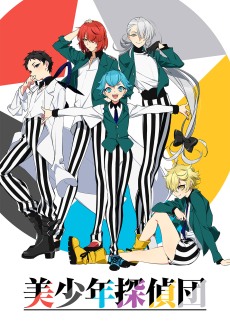 ANIME ComedyBishounen Tanteidan
ANIME ComedyBishounen Tanteidan ONA MysteryAiyou De Mishi
ONA MysteryAiyou De Mishi ANIME AdventureMeitantei Conan
ANIME AdventureMeitantei Conan
SCORE
- (4.05/5)
TRAILER
MORE INFO
Ended inJune 22, 2025
Main Studio Lapin Track
Favorited by 535 Users
Hashtag #小市民




